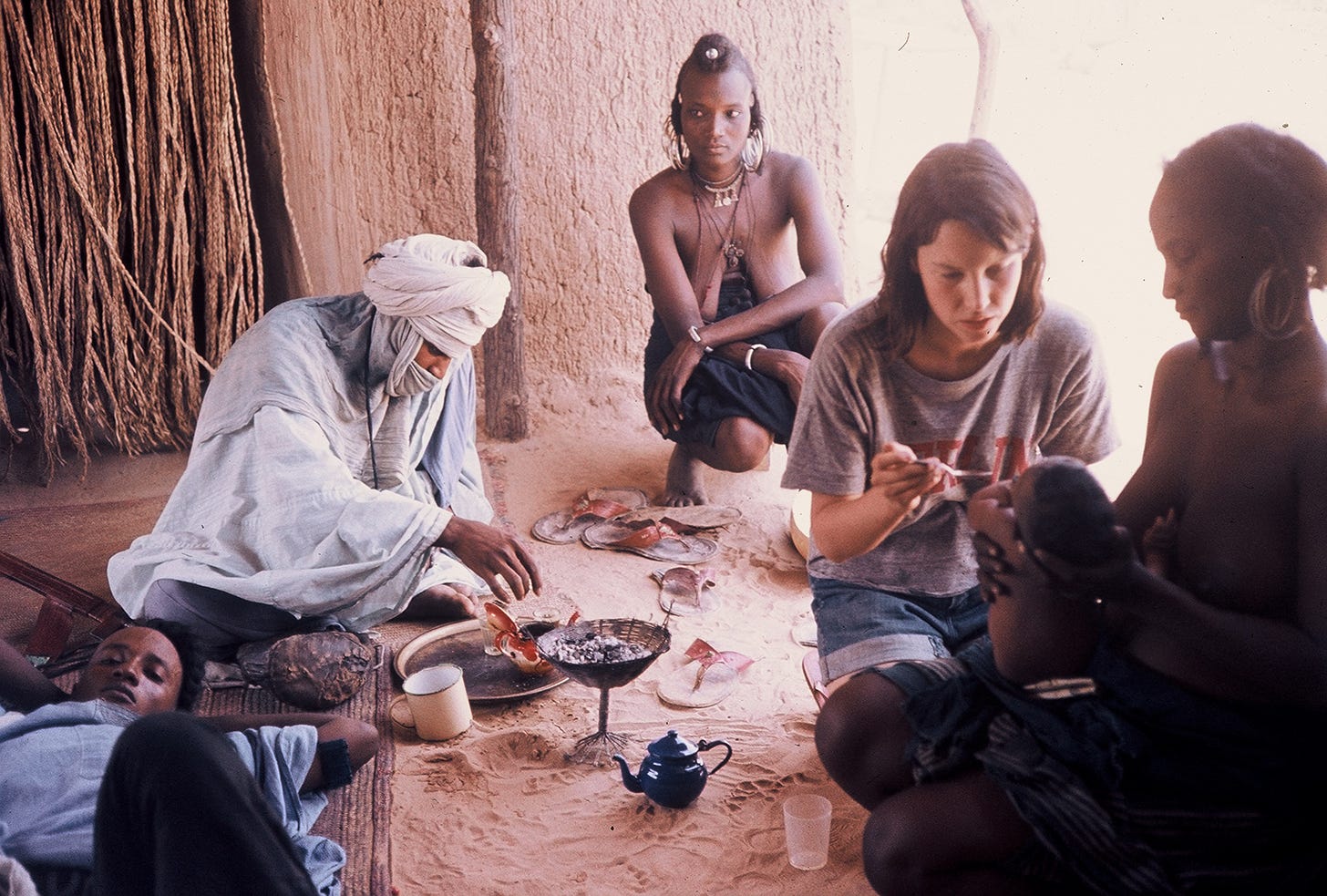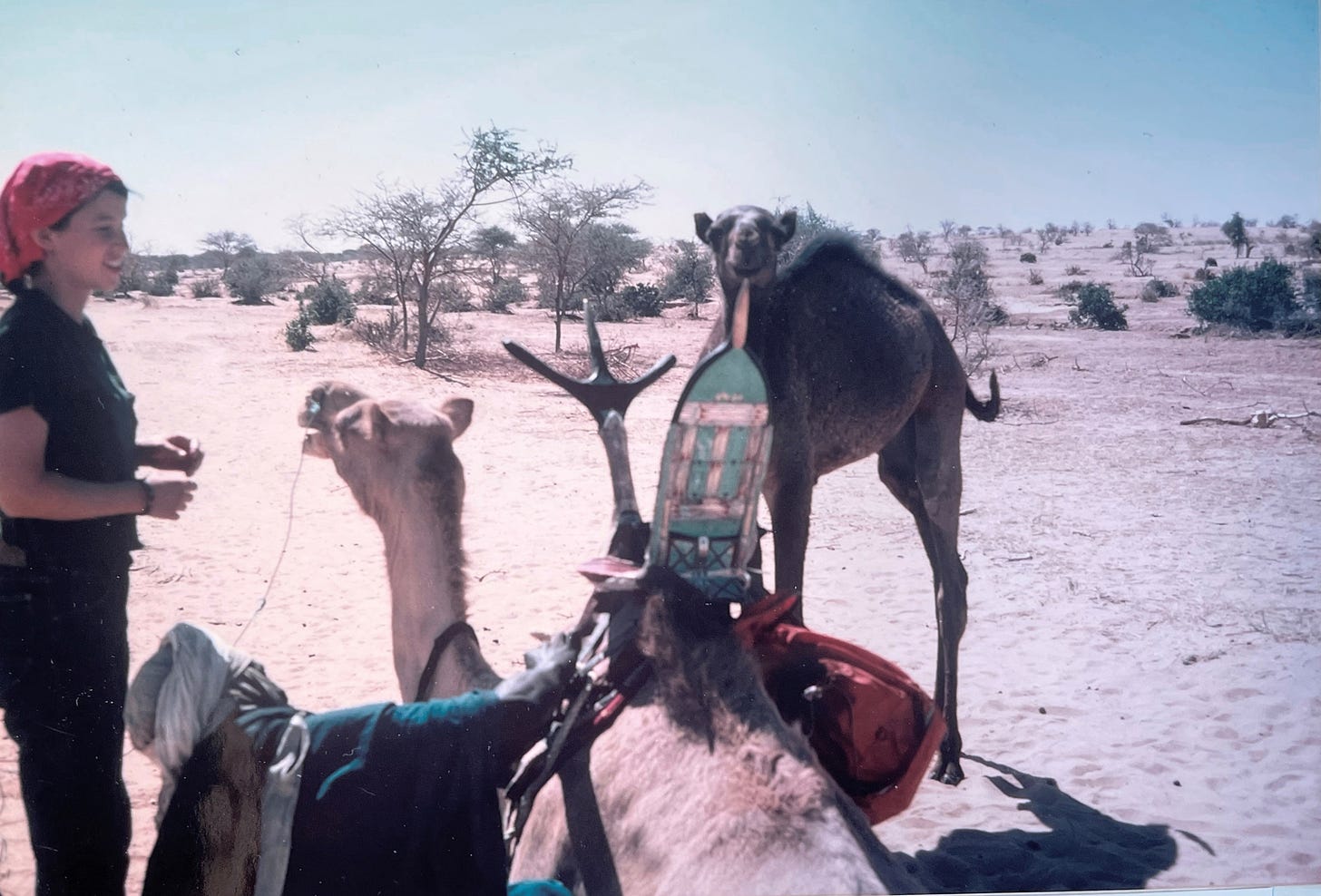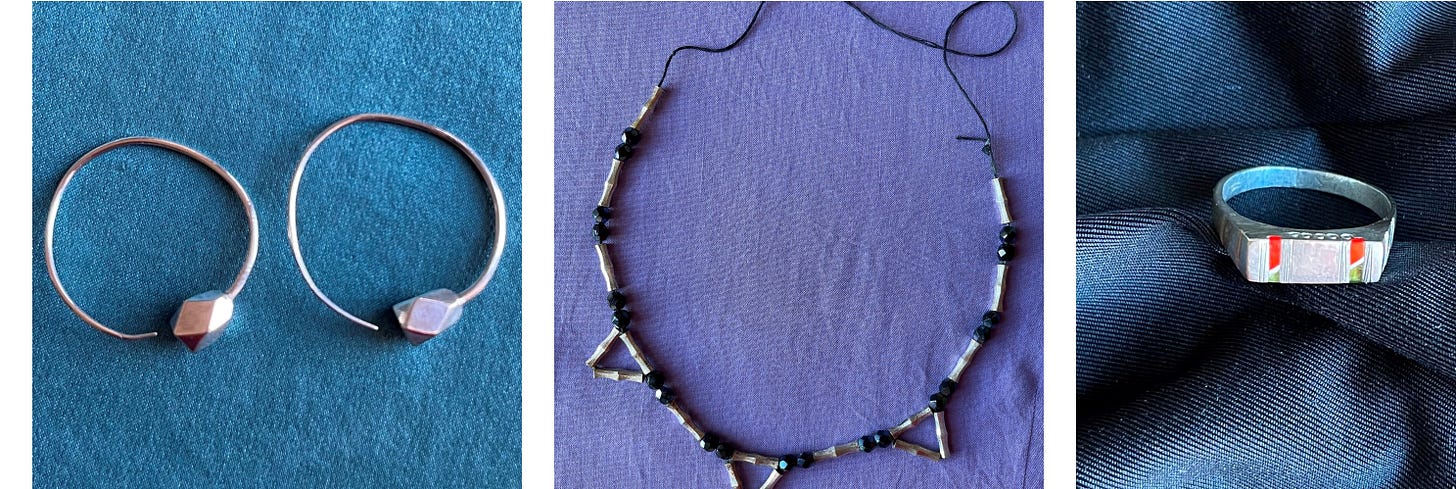
My last post offered my Tuareg clothing as an example of items with no current use or monetary value that are nonetheless so imbued with memory that we feel we must preserve them – somewhere, somehow. I didn’t bring much back from my two years in Niger (unless you count hundreds of color slides and an entirely remodeled worldview). But I still have a few pieces of simple silverwork and the story that goes with them.
During my second year in Aderbissinat, my partner and I had new saddles made for our two camels. The camels were our work transport, purchased for us by Peace Corps. Let me pause to acknowledge that white people on camels is a cliché of African tourism. I know that now, but I didn’t then. We had no other way to get around, as Peace Corps was not about to buy us Land Rovers, the upmarket mode of desert travel. There were no paved roads in the barren landscape around Aderbissinat, only tracks in the sand. Volunteers in larger towns got mopeds; we got camels. In addition to working in the village clinic, we would ride the camels several kilometers into the bush to visit nomadic Tuareg camps, where we would check on pregnant women and newborns and tend to simple medical concerns.

I don’t remember why we needed new saddles, but apparently we did. In Niger, leatherwork and silverwork are done by smiths called mekaris, who are respected for their artisanal skills. We knew of a mekari named Akou who lived in a tent on the outskirts of the village, and we went to see him. In our daily journal entry for April 9, 1977, we wrote, “Over the hill to see mekari about saddles and rings.” In addition to the leather saddles, we wanted to have jewelry made, and we agreed on prices for all.
The work took two months, and during this time we made several visits to Akou’s tent. On one occasion he thanked us with a repast of macaroni and goat meat, special foods considered suitable for guests. And there was tea. Boiled in a teapot over a charcoal brazier, it was sweetened with chunks of sugar broken off a large cone wrapped in blue paper. Three rounds were served in tiny shot glasses: the first bitter, the second sweet, and the last sweetest of all. On April 27 we recorded, “Tea, bread, macaroni and meat!! Saddles are coming along slowly, but beautifully.”

On June 1 we picked up the finished saddles, and several days later we tried them out – with unfortunate results. Our journal entry for June 5 reads: “Camel riding. We crash to the ground narrowly avoiding death. Saddle broken.”
This was in no way Akou’s fault. We were always falling off the camels. Highly intelligent beasts, they have a nasty streak and don’t suffer fools – inexperienced riders – gladly. My partner and I fell into that category, so they tossed us off. It was a long way down, but we were young and our bones not yet brittle. We must have had the broken saddle repaired soon afterward, because a subsequent entry notes that we went “to Akou’s to retrieve saddle” on June 11.
I didn’t bring the saddles home with me at the end of my service; they were passed on, along with the camels, to the volunteers who replaced us in the town. But I kept the earrings, necklace, and ring that Akou made for me.
The ring is silver, with delicate inlays of red and green. The earrings are slim silver hoops with geometric shapes at one end, and I wear them to this day. The necklace is made of silver tubular beads and black glass beads threaded together in an intricate design. I have never worn it, in part because the cotton thread that holds it together is old and frayed.
The jewelry reminds me of how we gradually became part of the life of this tiny village on the edge of the Sahara. We commissioned goods to be made for us and sat in the silversmith’s tent, discussing our order in Hausa over glasses of tea. Above all, my silverwork reminds me of the mekari’s patience and skill and of the beauty to be found amid the vast arid scrubland of the Nigerien Sahel.





Love the pictures! Love the stories! Yes, camels are nasty, but what can you do?? They bite, spit, and obviously try to throw you off. I have only ridden horses (some of them like that also) and the occasional cow or two in Mississippi when no horses were available. Actually, the cows were much more placid, and didn´t mind us riding. They went their own way of course. We never tried a saddle or bridle. The horses in Mississippi we rode bareback, but we did have bridles.